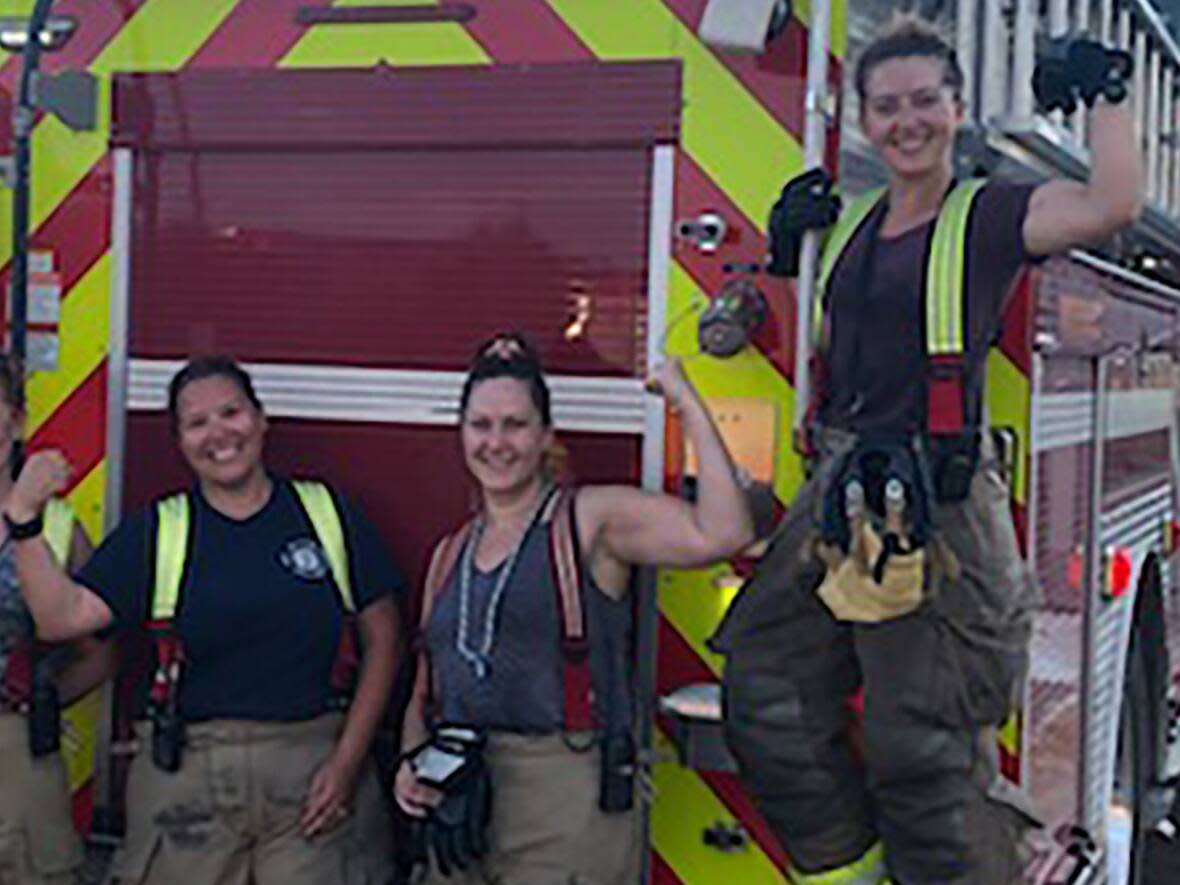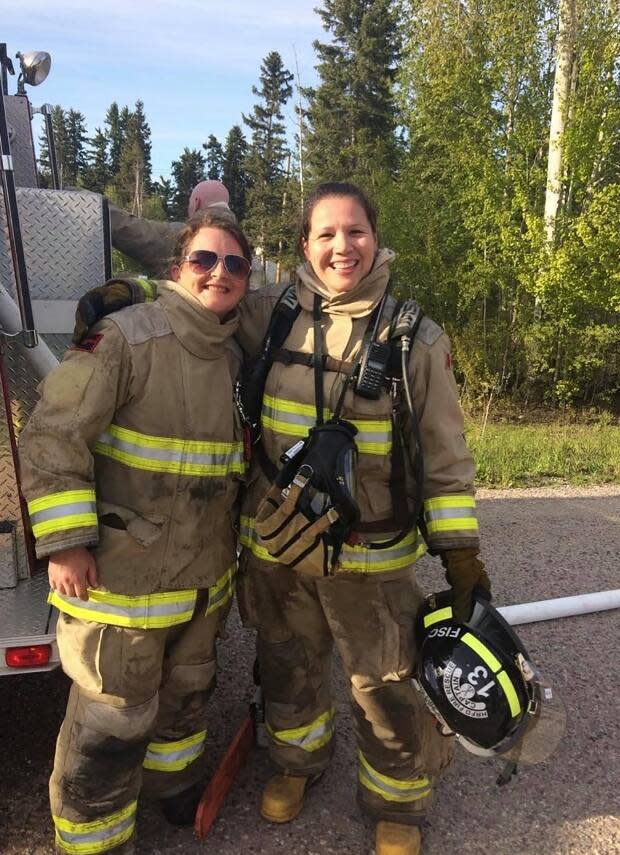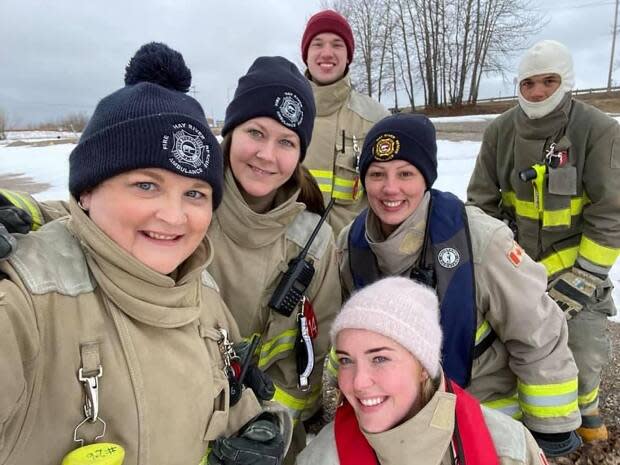'It's a part of who we are': Almost half of Hay River's firefighters are women

Women make up less than five percent of Canada's firefighters. But in Hay River, N.W.T., their female-to-male firefighter ratio is almost half.
Kirsten Fischer is one of three fire captains in Hay River, a title she's had for six years. She joined the department 16 years ago because she wanted to give back to the community she grew up in.
She said when she first became a volunteer firefighter, there wasn't a high number of women on the team — but she's been happy to see that slowly change over the years.
"I think it was because other females see that, oh, they have female firefighters," said Fischer. "They are also happy to see a female captain in that role."
Fischer is one of 12 women out of 30 firefighters with the department. They respond to both fire and ambulance emergencies. She said women bring a unique level of care to the team, especially if the patient is female.
She said balance is important when it comes to responding to emergencies, because many female patients would rather interact with a female ambulance attendant. They try to have at least one female responder present when responding to ambulance emergencies.

Travis Wright, Hay River's fire chief, said the department has a history of having female officers.
"It's a part of who we are," he said.
"I think it makes us a good department. I think it makes us balanced."
Stacey Barnes is also a volunteer firefighter in Hay River and has been with the department since 2016. She said regardless of gender, everyone is treated equally. "As long as you're trained for it, there's no holding back."
Barnes said the most intense fire she's fought so far was the Hay River landfill fire, which lasted 24 days. That was also the same month the Mackenzie Place highrise caught fire.
The fire at the 17-storey highrise on March 15, 2019, displaced about 150 Hay River residents.
"We were doing 24 hours a day at the dump, 12-hour shifts," said Barnes. "Then we got a call that the highrise was on fire."
She said they would routinely get calls for the highrise and they were usually false alarms. That day, though, when they turned the corner coming into town, they saw the smoke billowing from the building. Barnes was on the truck handling the water cannon to prevent sparks from spreading the blaze.
All-female attack team tackle house fire
Fischer and Barnes were also on call at a house fire a couple of years ago where the entire attack team was female.
"The first attack was a female attack team and the second attack was a female attack team," said Fischer. "So it was straight females for a good couple of hours."
The house was ultimately lost, but they were able to save the house next door. Both Fischer and Barnes said the accomplishment felt great and the team executed the attack as well as any other firefighters on the team.
"The people lost their house. But they came over and they couldn't believe that there was mostly us women [fighting the fire]. They were thanking us, it felt amazing," said Barnes.

Wright said he's proud of the high number of female firefighters with the department, something he sees as an advantage.
He said everyone is good at their jobs within the department, but he recognized that it's nice to have female teammates take the lead to help connect with female patients when needed.
"We have some good female ambulance attendants that are nurturing and very good at patient care," said Wright.
He said all of the firefighters go through the National Fire Protection Association 1001 standard for fire training and Emergency Medical Responder training for the ambulance.
"It's the same level of training you would get if you were doing this as a full-time job in the city," said Wright.
He stressed that each firefighter chooses their level of participation based on their level of comfort, not gender. They work with each firefighter based on their skills and techniques to achieve a well-rounded department.
Wright said they have women jumping on first attack teams but they also have people, men and women who aren't comfortable with that position.
"There's another job for them. There is a job for everyone on the fire ground," said Wright.


